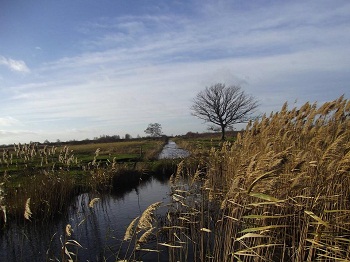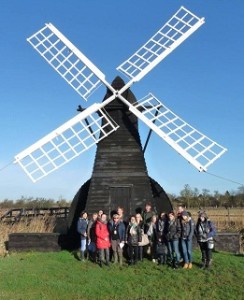From the 19th Century to the 21st: University of Northampton research analysing abundance of birds published in European Journal of Ecology
Date 23.12.2015
23.12.2015
Dr Duncan McCollin, Associate Professor in the School of Science and Technology, has just had a paper ‘Pushing back the baseline: a novel approach to detect long-term changes in terrestrial faunal abundance using historical qualitative descriptions’ published in the prestigious European Journal of Ecology.
Studies that examine changes in the populations of flora and fauna often do so against a baseline of relatively recent distribution data, rarely using data that is over 50 years old. Dr McCollin has been working with Professor Tim Sparks from Coventry University and Dr Richard Preece from the University of Cambridge on this research, which uses two methods (regression analysis and line of equality) to identify long-term differences in abundance derived from qualitative descriptions. The researchers also tested the efficacy of these approaches by comparing them to contemporary data.

Dr McCollin explained: “In order to measure change in biodiversity we need to establish a baseline, but the question of which baseline to use is one which is rarely addressed since, due to a lack of data, we are often limited to just a few recent decades.” In this research we attempt to push back the baseline for British birds by using historical records from between 160-190 years ago. By converting qualitative descriptions of abundance (e.g., rare, few, not very common, common, very common) into a five-point scale, the authors were able to correlate abundance from Victorian times to those of today.
“Two methods of comparison were evaluated using a case study for birds in Cambridgeshire. In total, 19 species of breeding species were found to have gone extinct in the region and 11 new species had arrived (though they hadn’t taken the place of those which had disappeared). In terms of changes in abundance, both methods showed that 10 species had declined as breeding species and three species had increased, while for over-wintering species, nine species had declined and three had increased. The regional extinction rate was twice the corresponding rate for plants. This long-term overview came up with some surprising results, for example an apparent increase over the longer term for Wigeon that do not correspond to recent trends. The study highlights some of the potential benefits (and problems) of taking a long-term view but clearly shows the effects of changing land use on bird populations.”
The European Journal of Ecology is a bi-annual journal, which publishes original, peer-reviewed papers from all fields of ecology.
—
Pictures: One of the main reasons for the losses of birds is the loss of wetlands like Wicken Fen. A group of students studying BSc Environmental Science, BSc Wildlife Conservation, BSc Biology and FdSc Countryside and Wildlife Management recently visited Wicken Fen – which is one of Britain’s oldest nature reserves – as part of their studies.To view a full album of images from the trip, visit their Facebook album.